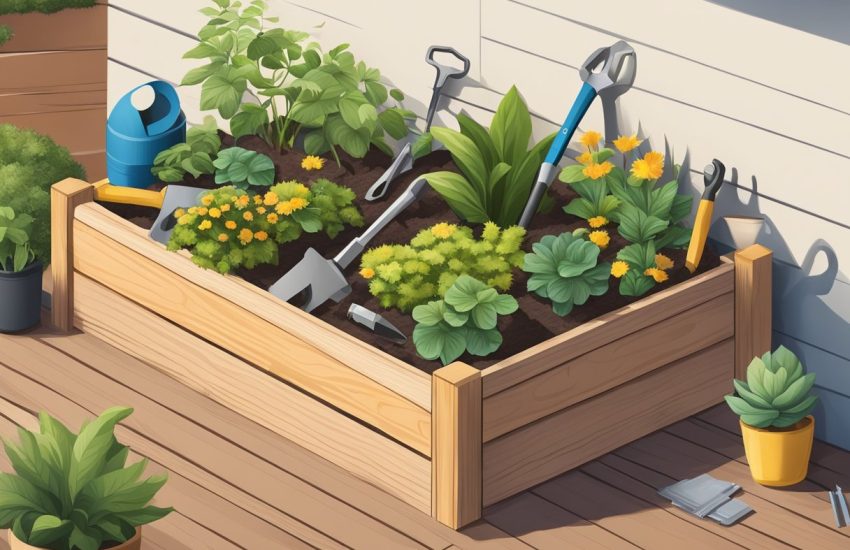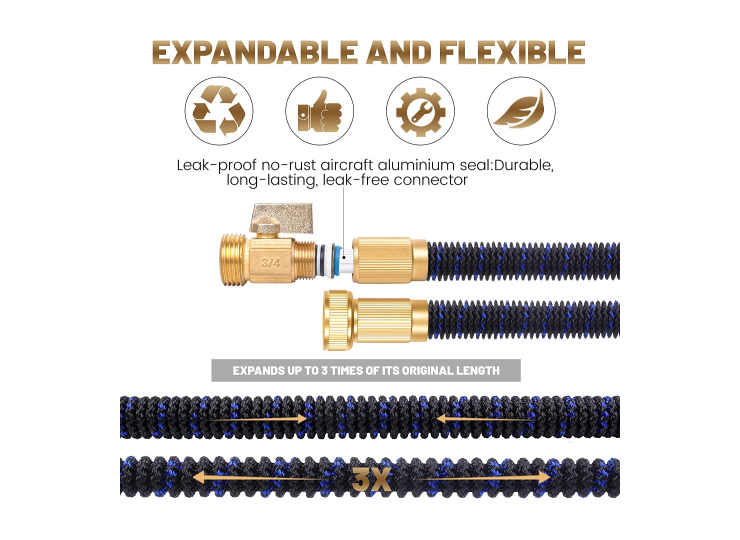14 Ground Cover Plants to Grow in New York
Ground cover plants are a great option for those looking for a way to cover bare ground and improve their landscape. Whether you are in the city, suburban, or rural areas of New York, adding ground cover plants will add pops of color to your yard as well as prevent certain types of unwanted weeds. These types of plants are typically lower to the ground and eventually grow into attractive fruit, flowers, or greenery. However, it is important to select ground cover plants that can survive the New York climate, which is why I have decided to write an article about the best ground cover plants to grow in New York. Below, I will tell you about 14 different types of ground cover plants to consider growing if you live in the Empire State.
1. Eastern Teaberry
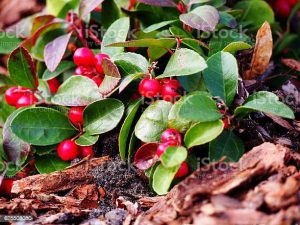
The Eastern Teaberry is the perfect ground cover plant to start this list. It is part of the blueberry family and does best in soil that is a little moist and well-drained. This beautiful plant can survive the cold winter temperatures, making it great for planting in New York. You may be wondering if it produces any berries because of its name, and the answer is yes. In fact, it produces sweet red berries which are edible.
The Royal Horticultural Society gave the Eastern Teaberry plant the Award of Garden Merit. The reason for this is because this plant does not require a lot of effort or maintenance as pests and diseases do not bother it. All you must do is plant the Eastern Teaberry in a shaded area with the correct well-drained moist soil, and you will see it thrive quickly.
2. Shrubby St. John’s Wort
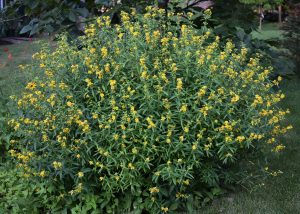
Another plant that does not require much care is the Shrubby St. John’s Wort. This plant is highly adaptable to various conditions, can be planted in any season, and blooms for a long time. It is worth mentioning that this shrub does grow slowly, and you may feel like giving up. However, if you can be patient, it will be well worth the wait once it starts blooming.
The St. John’s Wort can handle all types of moisture conditions. As a matter of fact, if flooding ever comes to your area in New York, this plant will most likely survive. Diseases and pest problems also rarely bother the Shrubby St. John’s Wort, making it an excellent choice to add to your ground cover plant collection.
3. Bearberry
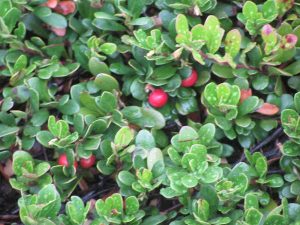
The Bearberry is a type of plant that can prosper in unusual places. As a matter of fact, most people grow Bearberry plants in areas where it is difficult for other plants to thrive. This type of plant does well in rock gardens or even hanging over garden walls. It will typically grow around 6 to 12 inches in height. The best part about this ground covering plant is the dark green teardrop leaves as they are very distinctive and easy to notice.
If you have not experienced much rain lately or do not see a lot of rain in the forecast, you do not have to worry about the Bearberry plant. It can handle droughts, which makes it a low maintenance, popular choice for those interested in gardening but do not have a lot of time for watering.
4. Common Blue Violet
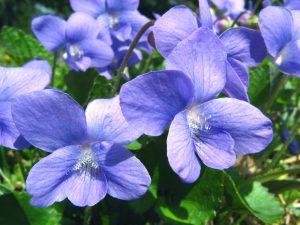
If you are looking for a colorful plant option, my suggestion is to check out the Common Blue Violet, which is a perennial herbaceous plant that is part of the Violaceae family. This plant will bring shades of blue or white flowers to your yard with leaves that look like hearts. It is very charming to look at, and it usually blooms between spring and summer.
The Common Blue Violet grows best when it is planted in areas with some shade and soil that is well-drained and moist. Pruning is required to extend the blooming season of this plant. An interesting aspect that people may find surprising to learn about this plant is that the flowers and leaves are edible even though they have a bland, tasteless flavor. They are filled with vitamins and are commonly used in salads, jellies, candles, and many other items and products.
5. Ostrich Fern
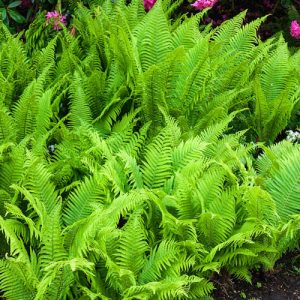
If you are in search of a plant that thrives in the colder climate, the Ostrich Fern is a wonderful choice. This plant will bring lots of green colors to your yard. As a matter of fact, it looks great in large groupings, making it popular among landscapers and homeowners. The fronds are a medium shade of green, arch out, and bear a resemblance to ostrich feathers.
Although this plant thrives in cooler temperatures, it can handle the heat and humidity that summer brings. However, try to keep in mind that it grows best by some type of water, in a shaded natural garden, or a moist woodland area.
6. Scarlet Beebalm
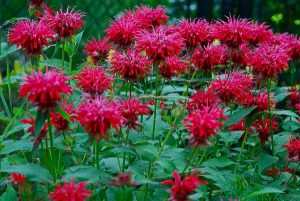
Scarlet Beebalm plants are shrubs that have a very appealing smell and appearance. They are flower clusters that are tall and grow into vibrant colors such as pink, red, white, and purple. To some people, they may resemble fireworks as they provide bursts of colors. The Scarlet Beebalm needs to be planted in a shaded area, especially during the summer months. For any garden or area around your home that needs some color, this type of plant is definitely the solution.
7. Creeping Sedums
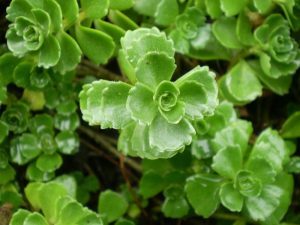
If you are in need of a plant that does not require much watering, the Creeping Sedums are the perfect selection. These plants are very appealing to the eye as they turn different colors as the seasons change.
During the spring and summer, the Creeping Sedums will grow yellow flowers. In the winter months, they bring bright red and orange spikes which are perfect for the time of year. This plant is around four inches tall and two feet wide. It thrives best in medium-drained soil and loves to soak up all the sun when possible.
8. Thyme or Thymus Vulgaris
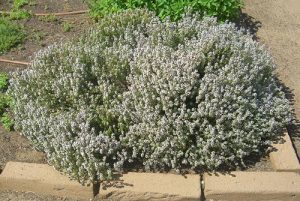
Thyme is a very lovely plant to grow in the New York area. In fact, this plant is a popular choice when it comes to choosing a type of plant to grow over rock gardens as well as between steppingstones. This plant has a distinctive and pleasant smell, which attracts bees and other pollinators.
Depending on your patience level, it is important that you do your research and decide which Thymus Vulgaris you may prefer because some grow and spread much quicker than others. Thyme will typically grow to about six inches tall and 18 inches wide. They will become pink and blue blossoms that you will instantly recognize and never forget after seeing their beauty and smelling their fragrance.
9. Brass Buttons
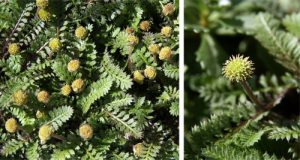
Brass Buttons are known for growing into interesting, bronze-colored, button-shaped flowers. This type of plant prefers well-drained soil and can handle a lot of sun during the day. If you have young children, pets, or simply a lot of foot traffic in your area, Brass Buttons are a good option to plant because people can walk on them and no damage will be done.
To see Brass Buttons reach their full potential, they will grow well in Zones 4 to 7. When fully grown, they will measure to be around six inches in height. For a very low-maintenance ground cover plant, Brass Buttons will not disappoint.
10. Creeping Juniper
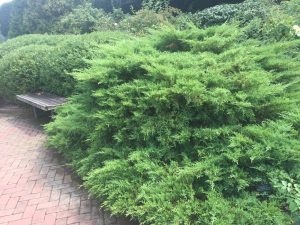
Creeping Juniper is known for its ability to spread. This plant is a charming evergreen shrub that is popular for ground cover. Even though it does not grow any flowers or fruit, it provides a pleasant type of greenery as well as improves the appearance of any location that it is planted.
The Creeping Juniper plant can withstand the hot temperatures of the summer as well as the cold temperatures of the winter. People love the way this plant looks in their yard during the winter months, especially when the snow lands on it. It will provide your landscape with an amazing winter vibe. Creeping Junipers can adapt to all types of soil, which is perfect for the New York climate as the soil can quickly become poor or dry. No pruning is required.
11. New York Fern
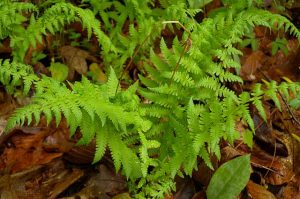
The New York Fern is a native plant to New York. This plant will grow into a fine-textured fern that consists of thin leaves. The leaves will become a yellow-green color and taper from the bottom to the top. It is known to multiply very quickly, making it a great choice for those needing a ground cover plant.
This plant contains about 20 pinnae which turn into gorgeous leaflet clusters. It prefers a humus-rich soil that is moist. However, if it does not rain in your area often, do not worry as the New York Fern can survive very dry conditions. Continually cutting off the faded leaves is a requirement to see the New York Fern thrive successfully.
12. White Wood Aster
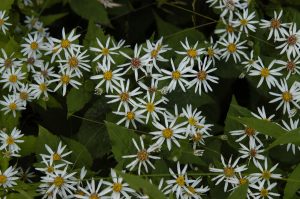
White Wood Aster is a bushy herb that turns into incredible purple and white daisies. If you are looking to add an appealing look to your New York landscape, this plant is an excellent selection. They tend to bloom during the late summer to late autumn months, and birds are attracted to them.
This type of plant is a low-maintenance option. Therefore, it does not take much effort to help it grow. However, it does favor well-drained, medium to dry soil that is fertile. It also needs to be planted in an area that has at least partial or full shade. Pruning is periodically needed, but much watering is not.
13. Creeping Phlox
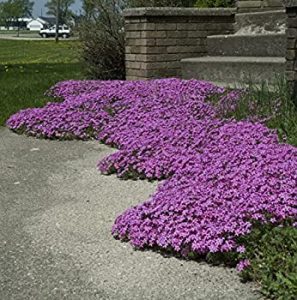
Creeping Phlox is for those who are in favor of flowering ground cover over green ground cover. This type of plant is one of the most attractive ground cover plants on this list. It forms into stunning purple flowers that will bring splashes of color to your landscape or garden. The green, oval-shaped leaves also help the purple color pop, which is very easy on the eye.
If you need a low-maintenance, delightful flower choice, the Creeping Phlox is your best choice. This type of plant enjoys a lot of sun and needs partial shade frequently. It also possesses the ability to withstand a drought or little to no water for long periods of time. To see these purple flowers reach their full potential, you should consider planting them in acidic, rich-organic soil.
14. Heartleaf Foamflower
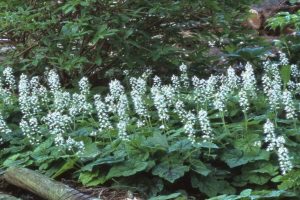
The Heartleaf Foamflower is a gorgeously clump-forming herb that is one of the most detailed plants you will ever see. Impressively, it also received the Award of Garden Merit by The Royal Horticultural Society. This plant is known for producing flower buds with eye-catching pink tips. The pink tips sit on top of white blooms that look like small stars, and the leaves are heart-shaped and vibrant green. Throughout the spring and fall months, the green leaves have burgundy veins. These same veins turn to a red-bronze color in the winter months.
Just like the other ground cover plants on this list, the Heartleaf Foamflower does not require much upkeep. This plant can handle many different types of soil as long as it is well-drained. It also does best in a partial sunny and partial-shaded area. You will need to water the Heartleaf Foamflower plant from time to time but not excessively.

